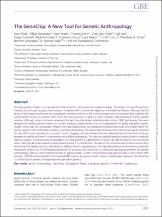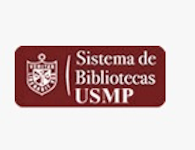Mostrar el registro sencillo del ítem
The GenoChip: A new tool for genetic anthropology
| dc.contributor.author | Elhaik, Eran | |
| dc.contributor.author | Greenspan, Elliott | |
| dc.contributor.author | Staats, Sean | |
| dc.contributor.author | Krahn, Thomas | |
| dc.contributor.author | Tyler-Smith, Chris | |
| dc.contributor.author | Xue, Yali | |
| dc.contributor.author | Tofanelli, Sergio | |
| dc.contributor.author | Francalacci, Paolo | |
| dc.contributor.author | Cucca, Francesco | |
| dc.contributor.author | Pagani, Luca | |
| dc.contributor.author | Jin, Li | |
| dc.contributor.author | Li, Hui | |
| dc.contributor.author | Schurr, Theodore G. | |
| dc.contributor.author | Greenspan, Bennett | |
| dc.contributor.author | Wells, R. Spencer | |
| dc.contributor.author | Genographic Consortium | |
| dc.date.accessioned | 2020-07-13T21:25:10Z | |
| dc.date.available | 2020-07-13T21:25:10Z | |
| dc.date.issued | 2013-05-09 | |
| dc.identifier.citation | Elhaik E., Greenspan E., Staats S., Krahn T., Tyler C., Xue Y., et al. The GenoChip: a new tool for genetic anthropology, Genome Biology and Evolution. 2013; 5(5): 1021-1031. | es_PE |
| dc.identifier.uri | https://hdl.handle.net/20.500.12727/6332 | |
| dc.description.abstract | The Genographic Project is an international effort aimed at charting human migratory history. The project is nonprofit and nonmedical, and, through its Legacy Fund, supports locally led efforts to preserve indigenous and traditional cultures. Although the first phase of the project was focused on uniparentally inherited markers on the Y-chromosome and mitochondrial DNA (mtDNA), the current phase focuses on markers from across the entire genome to obtain a more complete understanding of human genetic variation. Although many commercial arrays exist for genome-wide single-nucleotide polymorphism (SNP) genotyping, they were designed for medical genetic studies and contain medically related markers that are inappropriate for global population genetic studies. GenoChip, the Genographic Project’s new genotyping array, was designed to resolve these issues and enable higher resolution research into outstanding questions in genetic anthropology. The GenoChip includes ancestry informative markers obtained for over 450 human populations, an ancient human (Saqqaq), and two archaic hominins (Neanderthal and Denisovan) and was designed to identify all known Y-chromosome and mtDNA haplogroups. The chip was carefully vetted to avoid inclusion of medically relevant markers. To demonstrate its capabilities, we compared the FST distributions of GenoChip SNPs to those of two commercial arrays. Although all arrays yielded similarly shaped (inverse J) FST distributions, the GenoChip autosomal and X-chromosomal distributions had the highest mean FST, attesting to its ability to discern subpopulations. The chip performances are illustrated in a principal component analysis for 14 worldwide populations. In summary, the GenoChip is a dedicated genotyping platform for genetic anthropology. With an unprecedented number of approximately 12,000 Y-chromosomal and approximately 3,300 mtDNA SNPs and over 130,000 autosomal and X-chromosomal SNPs without any known health, medical, or phenotypic relevance, the GenoChip is a useful tool for genetic anthropology and population genetics. | es_PE |
| dc.description.sponsorship | National Geographic Society | es_PE |
| dc.format.extent | pp. 1021-1031 | es_PE |
| dc.language.iso | eng | es_PE |
| dc.publisher | Oxford University Press (OUP) | es_PE |
| dc.relation.ispartof | urn:issn:1573-6628 | |
| dc.relation.ispartofseries | Genome Biology and Evolution;vol. 5, no. 5 | |
| dc.relation.uri | https://doi.org/10.1093/gbe/evt066 | es_PE |
| dc.rights | info:eu-repo/semantics/openAccess | es_PE |
| dc.rights.uri | https://creativecommons.org/licenses/by/4.0/ | es_PE |
| dc.source | Repositorio Académico USMP | es_PE |
| dc.source | Universidad San Martín de Porres - USMP | es_PE |
| dc.subject | Genética de población | es_PE |
| dc.subject | Haplotipos | es_PE |
| dc.subject | Genética humana | es_PE |
| dc.subject | Especiación genética | es_PE |
| dc.title | The GenoChip: A new tool for genetic anthropology | es_PE |
| dc.type | info:eu-repo/semantics/article | es_PE |
| thesis.degree.name | Medicina Humana | es_PE |
| thesis.degree.grantor | Universidad de San Martín de Porres. Facultad de Medicina Humana | es_PE |
| thesis.degree.discipline | Medicina | es_PE |
| dc.subject.ocde | https://purl.org/pe-repo/ocde/ford#3.02.00 | es_PE |
Ficheros en el ítem
Este ítem aparece en la(s) siguiente(s) colección(es)
-
Artículos [274]








